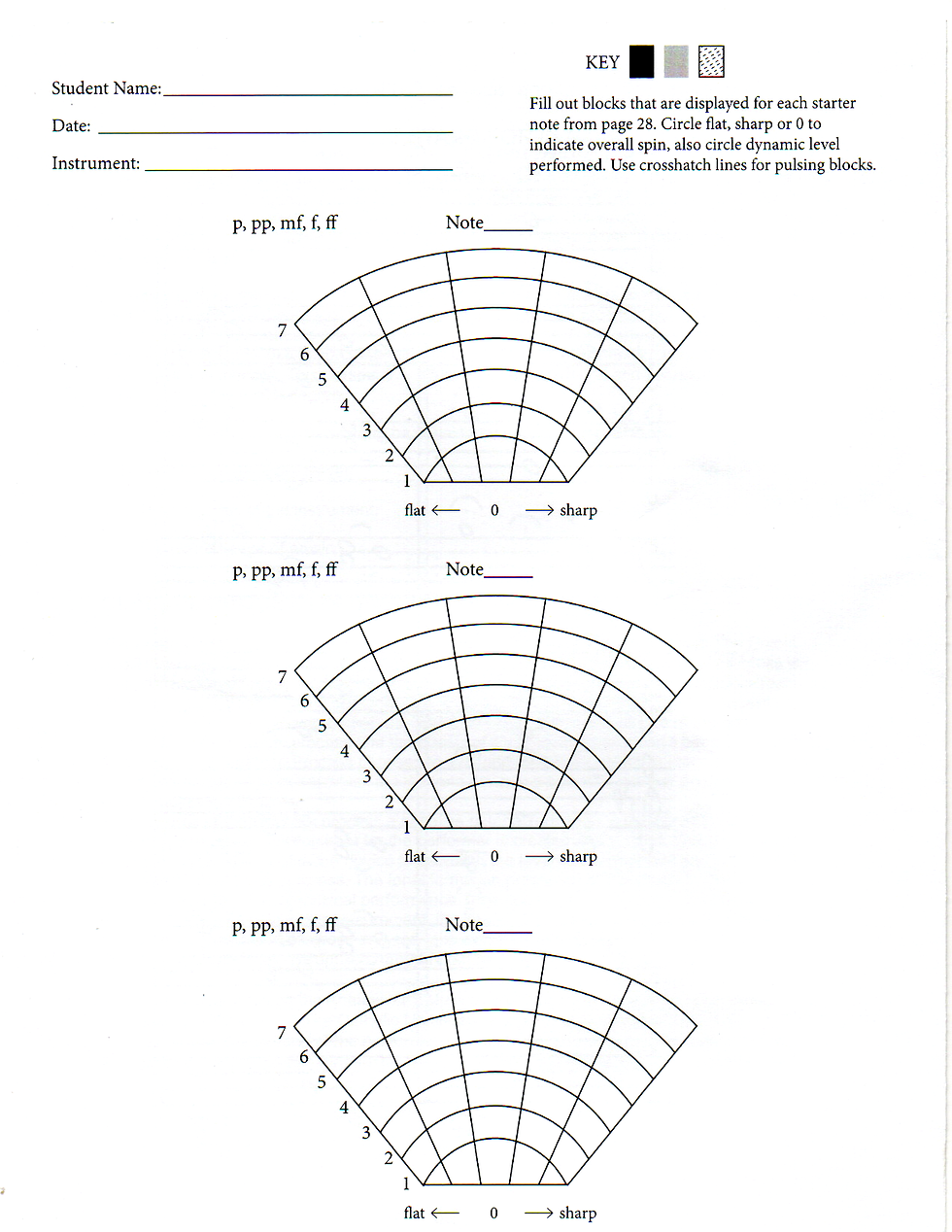CLINICAL PROCESS IN UNDERSTANDING TONE
The Anatowind Clinic has developed a musical teaching process (registered with The Patent and Trademark Office number 0714264) that allows quantifiable measurement of progress in tonal development in any student no matter what age, or ability level. In the Anatowind Teaching Process, music starts with the person and is amplified through the instrument to interpret the musical notation that is being performed. The tone of the instrument is one of the first domains measured in the musical process and the quality of its formation has always been subjective. The Anatowind Teaching Process chooses to evaluate tone in an objective manner through the use of a device called a strobe, which breaks tone down in a scientific manner according to the laws of physics.
In the course of the teaching process a baseline of tonal formation is established, and a physiological path of development for the performer is created and studied. The strobe is then used as an objective evaluation device to establish the level of development and growth in the performer’s efforts and progress. The tonal formation presented in the strobe is then measured against the other vents of musical performance: tone, tuning, volume, range and tempo.
Through the use of objective measurement, the student is able to quickly judge for themselves their level of growth and progress and can take ownership for the results produced.
This course of study can be applied through both the individual and ensemble study.
Anatowind Update March 2022
One of the most important technological advances of the 21st century in music has been developed and below is a condensed version of this 53 year journey.
In 1967 Joseph Simmons, director and founder of the Anatowind Music Clinic gave a demonstration of the clinic process at a University in the Midwest. After the demonstration, one of the music educators said he could not hear the difference in the sound on a student that was used as an example, whereas some other people in attendance could. Joseph Simmons realized, instead of becoming defensive over this, that there was a weakness in the approach, there would have to be visual evidence.
When he returned home he read that the Peterson Strobe Company had developed a more advanced strobe for tuning of wind instruments. He thought this was interesting and with the help of a local band director, he was able to obtain this strobe. This began a four year study of using the strobe as related to the head structure and breathing process.
As a result of this study, in 1974, the strobe gave the first demonstration outside the clinic proper to a college in the Midwest. This started the process of using it for clinic students over the next several decades. As the strobe was introduced to young players up to professionals, the reactions was , now I can see and understand my tone
In July 2015, contact was made with the Peterson Company to update them on what we have been doing with their Strobe and a representative visited the clinic proper. He was here for about five minutes for a demonstration when he said, I don't know if I'm in Kansas or Oz. He mentioned that they have had players use the strobe for tone, not just for tuning, but these players did not understand the process of how they achieved the results to show their tone improvement. The Peterson company thought there must be somebody out there that might have a process that could be explained to someone so they could see visual evidence of tone improvement. He realized we had this process.
Starting in 2015, several conversations were held with the Peterson company after this visit, and in January 2017, the clinic staff met with members of the company at their facility and they saw, yes, we had the process to properly interpret their strobe for visual tone improvement. The strobe was just not for tuning anymore.
In November 2019, an affiliate agreement was reached that would use the Peterson Auto Strobe and clinic teaching process to update the music community on a wind instrumentalist tone.
As mentioned earlier, this was a 53 year journey to what the clinic considers one of the most important technological advances for music in the 21st century, because it deals with the most personal element of the musician's life, tone.
We encourage everyone to learn more about this combination of the strobe and the clinic teaching process as many people are visual learners. This understanding of their tone through visuals helps them to relate better to what they hear and feel.
You can find information on this at www.anatowind.com , our Facebook page under videos. For anyone to fully realize the impact of this, they need to experience this on their own instrument. They then will have a better idea of how this can affect their understanding of their own tone
If you would like to know more about how you can start this process to understand the use of the strobe in this manner, please contact us and we will have a discussion with you.
Thank you
James Simmons
Clinic director
1-608-362-1920




